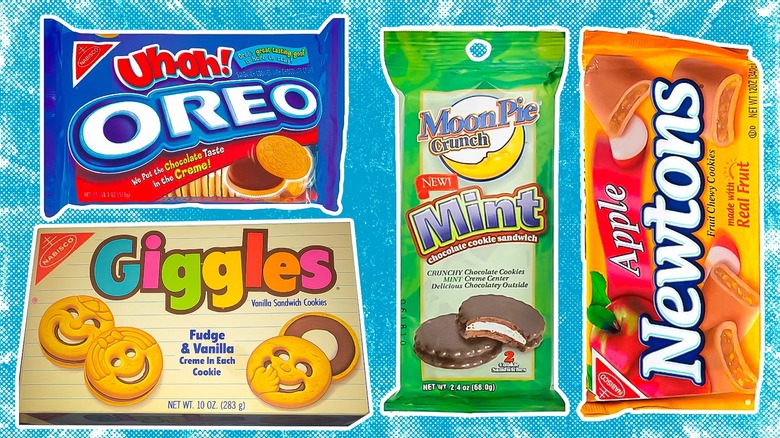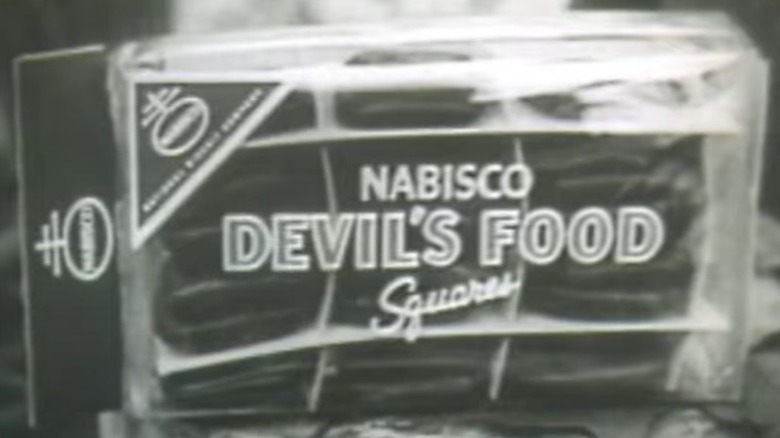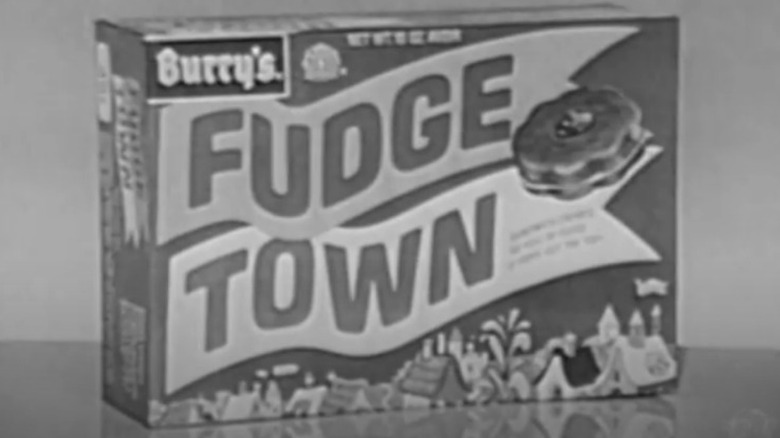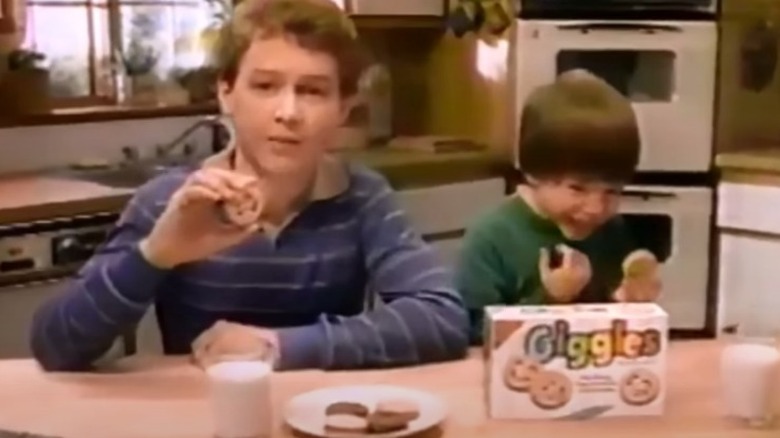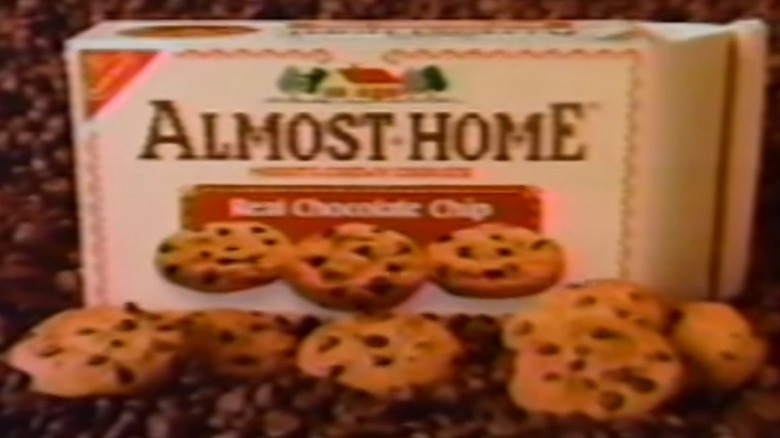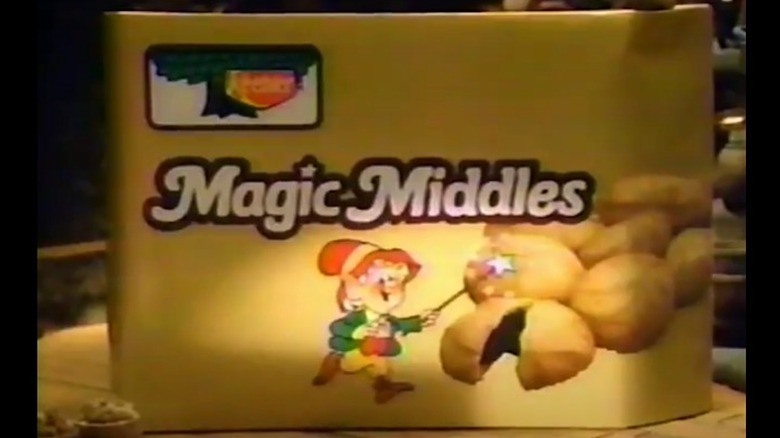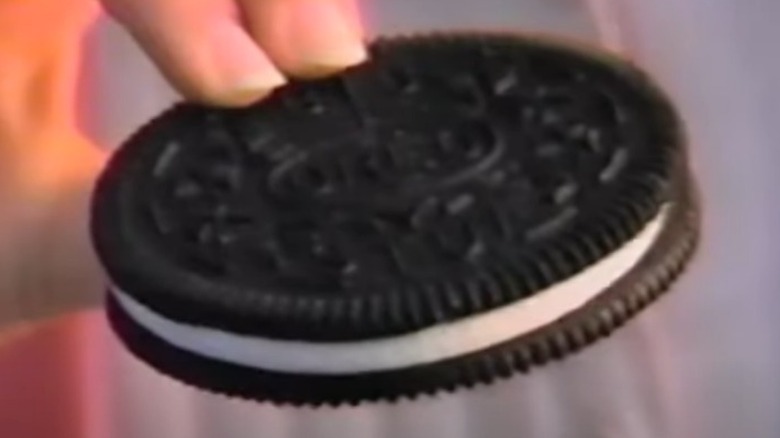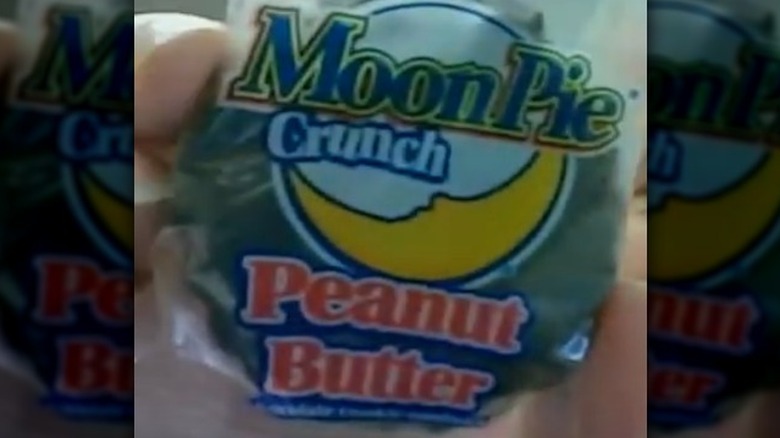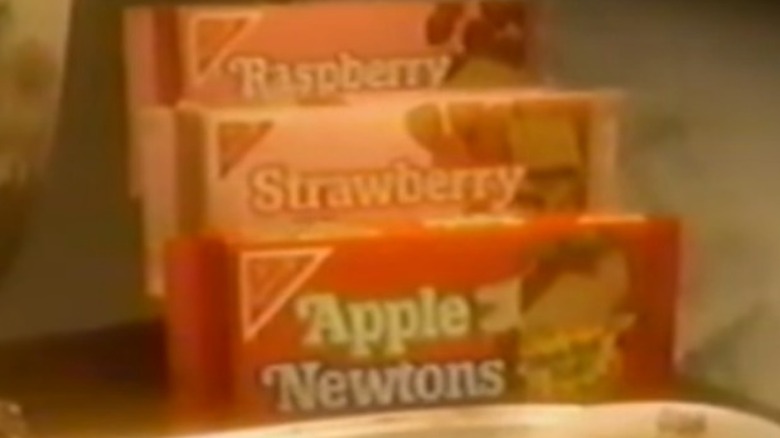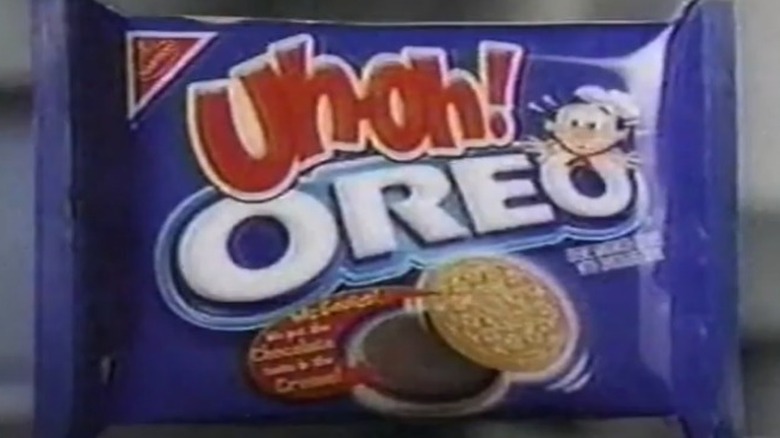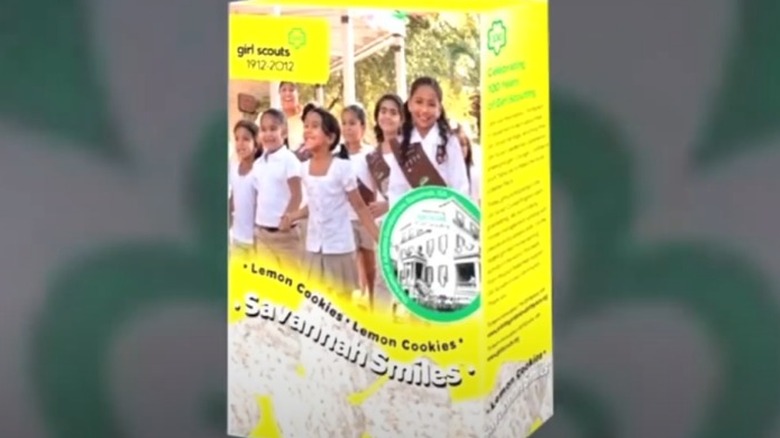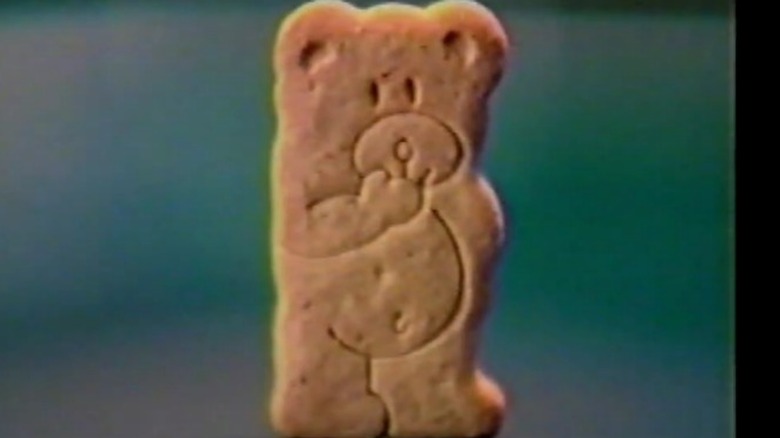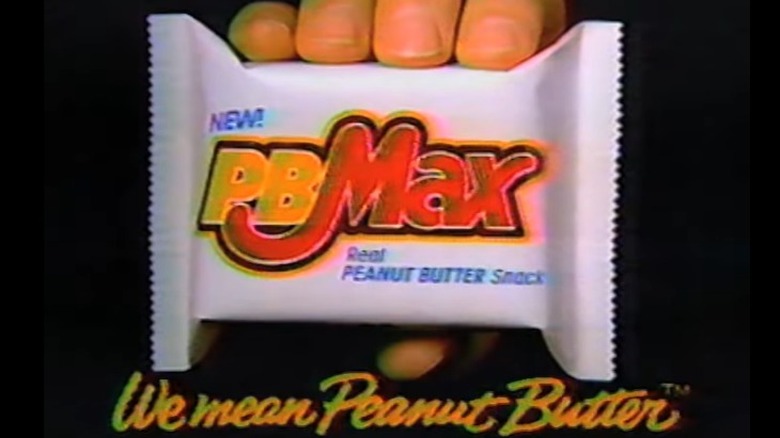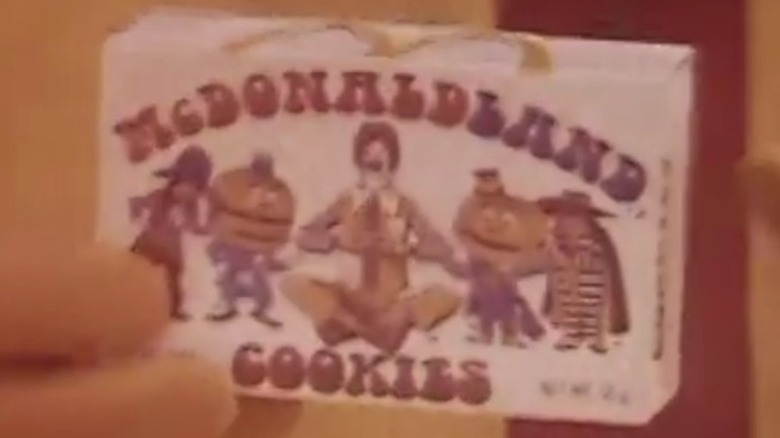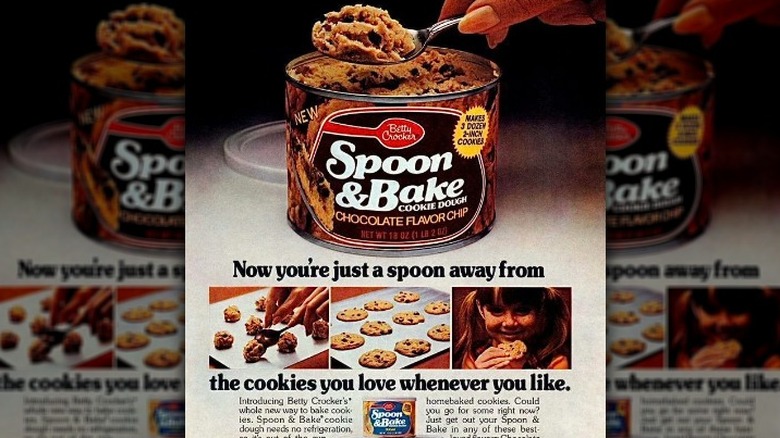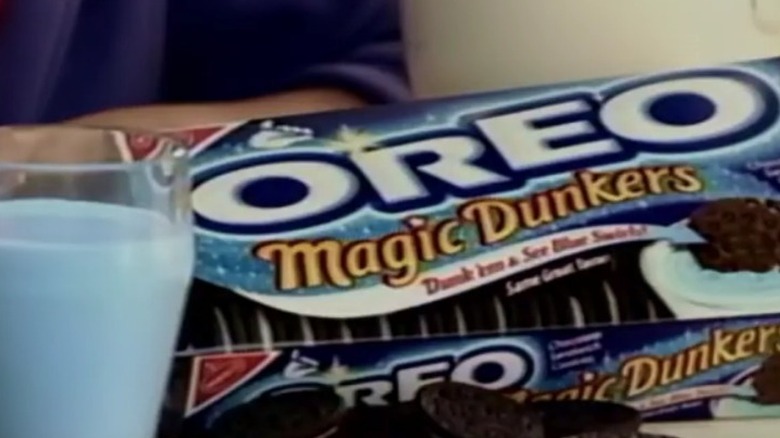15 Discontinued Cookies We Aren't Getting Back
If you are a human — or indeed one of almost any species of mammal — you like cookies. Your mom's or grandma's homemade variety is likely your favorite, but there are surely some store brands that tickle the taste buds as well. Sadly, if these are one of your preferences, you are out of luck because they left the shelves some time ago.
In the modern era, cookies are a commodity just like anything else. Although many of them attain national icon status and may be loved by citizens from coast to coast and beyond, they must make economic sense for a company to keep producing them. Changes in ownership, management, and ingredients over time can make the case for continuing a certain type untenable. Furthermore, changing public tastes can cause a product to simply fall out of favor, and popularity wanes. No matter what the reason, many of our favorite cookies of the past are no longer available today, and these 15 are examples of ones we are not getting back.
Nabisco Devil's Food Cakes
Delivered to the store in paper sleeve packaging, these delectable rectangles of chocolatey goodness were moist, soft, and utterly irresistible. The cookies themselves were made up of a light and sponge-like chocolate cake surrounded by a thin layer of marshmallow, finished off with semi-hard chocolate skin. If these were in your home growing up, what you likely remember most about them is how quickly they would be gone.
The Devil's Food Cakes by Nabisco were sold for decades before being made round and placed under the SnackWell's label in 1992. The rectangular cakes were turned into more cookie-like discs of chocolate while retaining the same basic version of the snack. However, that changed later on, as SnackWell's version became Devil's Food Cookie Cakes. It features nearly equally-sized layers of chocolate cake and marshmallows, now stacked inside a chocolate outer shell. They may not be terrible, but they are still just not the same.
Burry's FudgeTown
Burry's Biscuits was a major food producer since the 1880s, and a version of the company still exists today as Burry Foods. During its time as a division of Quaker Oats, Burry's created many sweet snacks, including the treasured Girl Scouts Thin Mint cookie. For many years, the Burry's Biscuit factory was a sprawling complex in Elizabethtown, New Jersey that had originally been built for automobile production before becoming a quarter-mile-long bakery. It closed in 2006 and burned to oblivion a few years later in 2011.
While we no longer have Burry's cookies on store shelves, YouTube has preserved for us a whimsical 1966 commercial for a snack much loved by people of a past era. The Burry's FudgeTown was a chocolatey sandwich cookie shaped like a flower and filled with chocolate. It is so full of chocolate, as the commercial proclaims, "it pops out the top." We can no longer enjoy this treat, but we can appreciate how much cookie advertising has changed thanks to this.
Giggles
For decades, British children enjoyed a popular snack from the United Biscuits company called Happy Faces. Nabisco released a similar version of Happy Faces for the American market called Giggles, which proved to be a popular treat in the '80s. United Biscuits ownership changed several times in the late 20th century and would eventually become a part of Nabisco.
Giggles are round sandwich-style cookies made from two vanilla cookies filled with fudge and vanilla cream in the middle. For those who were children in the '80s, you may not specifically remember Giggles cookies by name, but the variety of smiling and happy faces on the treats will surely spark a memory of your early days. The cookies not only had fun faces baked into them, but the eyes and mouths also opened, revealing the cream inside. This made snack time just a bit more fun, if not tasty.
Almost Home
While there are many great cookies available for purchase in the grocery store, most would agree there is no comparison with newly-made cookies from the oven. Aside from the ingredients' freshness and flavor, the biggest difference between homemade and store-bought cookies is the former's soft and chewy nature.
Prior to the 1980s, cookies from the store were exclusively hard and crunchy. Nabisco sought to change that with its Almost Home cookies, which were among the first mass-produced soft cookies. They were offered in a variety of flavors typical of homemade cookies, including the classic chocolate chip, as well as peanut butter, old-fashioned sugar, and more. The packaging design was made to elicit nostalgic feelings of home by emulating the embroidery or cross-stitching many kids might find their grandmas occupying their time with. Whether they were actually a valid replacement for grandma's home-baked cookies is arguably questionable, but the definitive answer is now lost to time.
Magic Middles
Keebler has been keeping our pantries full of sugary sweet and delicious snacks for generations thanks to their legion of baking elves behind the scenes. With its origins in a single Philadelphia bakery in 1853, Keebler is known for its wide variety of cookies and crackers more than for any one single product. It's probably even better recognized for its Keebler Elves advertising. Perhaps forgotten among these varieties is a tasty snack called Magic Middles.
This cookie is a shortbread treat that was offered either plain or with chocolate chips. Both were filled with a chocolatey fudge center. For most people who like a good cookie (especially kids), having one filled with a bit of chocolate just makes it that much better. It is unclear exactly when these left store shelves, as there does not appear to have been any large outcry at the time (like when Coca-Cola introduced New Coke). However, it appears there are people who are dearly missing their delicious Keebler snack; a petition posted on Change.org implores Keebler to bring Magic Middles back. Despite this, Keebler replied to queries on Twitter in 2019 that no plans exist for them to return.
Oreo Big Stuf
Few Americans can say they have never tried an Oreo cookie, as it's been one of the country's most ubiquitous and popular snacks for ages. Nabisco created this snack and put it on sale in 1912. Although it was essentially a copy of the Hydrox (created in 1908), Oreo has dominated the competition ever since. The original Oreo would remain unchanged for decades since its introduction, only receiving an alteration in 1975, when the Double Stuf Oreo hit store shelves. Since then, an array of varieties have been produced, including perhaps the most ridiculous Oreo of all, the Big Stuf.
The Double Stuf was created for those who enjoy a larger filling-to-cookie ratio, while the Big Stuff was made for those who just wanted a larger cookie-to-cookie ratio by creating a huge Oreo 3 inches in diameter with 316 calories and way too much fat for one serving. Each cookie was packaged individually and sold separately or in boxes of 10. There is no official record of why it was pulled off the market, but it only lasted seven years, from 1984 to 1991.
Moon Pie Crunch
The South is known for many delicious sweet treats, including key lime pie, peach cobbler, and buttermilk pie. Another well-known Southern snack you may have seen in stores is the Moon Pie from Chattanooga, Tennessee. This classic features two thick graham crackers with creamy marshmallow filling all dipped in chocolate. It is simple and delicious. Perhaps that is why the cookie-like variety Moon Pie Crunch no longer exists — you should never mess with perfection.
While the Moon Pie is a legendary snack that many say is best when enjoyed with an RC Cola, the Moon Pie Crunch attempted to make more of a cookie out of the original, perhaps to boost business by expanding the company's offerings. The Crunch is much smaller and has a similar appearance to a Thin Mint cookie. Its graham crackers are replaced with chocolate cookies, and the marshmallow is replaced with either mint or peanut butter filling. Both are covered in chocolate just like the original. It may not sound like such a terrible combination, but it apparently did not sell, as it is no longer listed on the Moon Pie website or with any retailer.
Apple Newtons
The Fig Newton is one of America's original commercially produced baked snacks. The first factory-baked Newtons debuted in 1898 and were integral to Nabisco's early history. Only because of an invention that was essentially a funnel for dough that housed a second funnel for jam could a cookie bar be continuously baked with a filling and no seams. It proved popular and continued to sell for more than a century. The recipe remained largely unchanged until the '80s when different fruit fillings were added to the lineup to create Blueberry Newtons, Strawberry Newtons, and Apple Newtons.
The new flavors were also a hit and remain a part of the Newton lineup. "Fig" was officially dropped from the name in 2012, and all varieties are now various flavors of the officially-named Newton snack. With the changes to the name, the apple flavor was dropped. However, you may be confused about this and may have seen Apple Newtons at the store recently. Indeed, Baked Apple and Cinnamon Newtons are currently available, but the recipe is different and maybe just not the same as the one we remember.
Uh-Oh Oreos
After Nabisco started branching out with its Oreo cookies and creating different flavors and styles, it was bound to make a mistake eventually. Uh-Oh! Oreos maybe was not really a mistake, but that is how the brand portrayed it in advertising. This cookie is the reverse of the traditional Oreo, having vanilla cookies sandwiched together with chocolate in between.
The reverse Oreos (and a clever commercial) came out in 2003. Perhaps the idea was to draw in customers who preferred cookies other than Oreos and would be drawn to these for not being ... Oreos?
Oreos are pretty well split. People either like them or they don't, and not much resides in between. Those who don't enjoy Oreos are more likely to seek another brand more to their tastes than to get a bastardized version of Oreos just to support Nabisco for some reason. Maybe it is not surprising they aren't around anymore. There seems to be little remembrance of them on the Internet, except for the catchy commercial on YouTube.
Girl Scouts Savannah Smiles
Girl Scout cookies are legendary, iconic, and beloved. The cookies available today have come a long way from those sold in 1917, which were homemade cookies made for a bake sale to raise money for the girls. That idea became popular enough to warrant having a commercial bakery produce the treats and have the Scouts sell them personally. Along the way, recipes have come and gone, while others (such as Thin Mints) have remained as stalwart mainstays. Some retired recipes were probably not so good, while others are missed, including Savannah Smiles.
These cookies were introduced as a tribute to the Girl Scouts' 1912 origins in Savannah, Georgia. They were released in 2012 for the centennial. Savannah Smiles are light and sweet lemon wedge cookies with a distinct citrus flavor and a dusting of colored sugar all over. While these are no longer available, recipes that emulate them are available online.
Teddy Grahams Bearwiches
Teddy Grahams are a perennial favorite among the nursery set, and they're still going strong today, pleasing toddler palates everywhere. The bite-sized treat debuted in 1988, introducing us to a sweeter, smaller, and more fun version of the graham cracker that straddles the line between cracker and cookie. They are further enhanced by being flavored (originally with cinnamon, honey, or chocolate), and they are also all finished off with a light sugary glaze. There is almost nothing to hate about a full box of Teddy Grahams.
The snack saw instant success, and Nabisco, the company behind them, did what giant conglomerates do: expand the name into a larger variety of snacks to squeeze each bear for as much profit as possible. One of those iterations was the Teddy Grahams Bearwiches. By the name, it's easy to deduce them to be Teddy Graham sandwich cookies. They were larger cookie-sized sandwiches that came in the same three flavors of Teddy Grahams, with either vanilla or chocolate filling, much like an Oreo. They apparently did well in the early days, as the Chicago Tribune reported good sales in the Northeast test market and noted Stage Deli, a longtime New York favorite that is now closed, had included them on a child's plate. Not only is the deli gone, but the Bearwiches are also history.
PB Max
The PB Max is an almost forgotten treat that could probably be classified as a candy bar as much as a cookie. Furthermore, it is a product of Mars, which is well-known for its candy products. Yet, PB Max is a rectangular snack of peanut butter mixed with oats set on a cookie and covered in milk chocolate, which means it is at least part cookie, and that is good enough. It also sounds like a tasty mixture, so it is a shame it no longer exists except in faint memories.
Mars released PB Max in 1989 as a snack rather than another candy bar, and its purpose was at least partially to be competition for the hugely popular Reese's Peanut Butter Cup. It was apparently a dense treat, likely packed with plenty of peanut butter, and still has a fan base. If it sounds good to you, there are many recipes online to make your own, but there is no way to know if they will stack up to the original.
McDonaldland Cookies
As a child growing up at any time from about 1971 to 2003, a trip to McDonald's was not complete without cracking open a box of their famous cookies. As a companion to the Happy Meal, McDonald's offered a small box of cookies printed with some variation of the restaurant's mascots, and it usually had some kind of pop-up handle on top. The container designs changed over the years, but the snacks remained the same. They were not much different from the popular animal crackers eaten by small children. The cookies themselves were also shaped like Ronald and the gang, while the flavor was unremarkable as it was not the point.
McDonaldland Cookies fell by the wayside along with Grimace, the Hamburgler, and Ronald. Accusations that McDonald's marketing directly to children was driving obesity rates became an increasingly big problem for the company in the late '90s, resulting in pressure for them to change course. In 2003, all the McDonaldland characters were retired along with the cookies, although the Happy Meal remains to this day.
Betty Crocker Spoon and Bake
Another type of store-bought cookie that is almost sure to taste better than the others comes in the form of dough. While there is no substitution for made-from-scratch cookies at home, the pre-made dough is a fine alternative that is generally fresher tasting and softer, especially right out of the oven. You can find several varieties of cookie dough in your local supermarket's refrigerated section, with chocolate chip, peanut butter, and sugar cookies among the choices from Nestle, Pillsbury, and more. Whether Betty Crocker currently sells refrigerated cookie dough may require a trip to the store to double-check. However, it was certainly offered in the late '70s ... in a can.
The Betty Crocker Spoon and Bake sounds like an easy and convenient way to make cookies. It was available in chocolate chip, sugar, peanut butter, and oatmeal raisin — all the favorites. The concept is easy enough, just spoon it out, place it on the tray, and bake. However, for those with weak self-control, this looks like an awfully dangerous product. With a can of delicious cookie dough in the fridge with a resealable lid, there's little to stop you from scooping out a cookie's worth or two every time you pass through the kitchen, eating hundreds of calories of sugar in no time. It is no longer around, and maybe that is a good thing.
Oreo Magic Dunkers
Oreo has tried a lot of tricks in the last few decades to keep the brand relevant. Making them super-sized or turning the cookies inside out failed to grab long-lasting attention, and at some point, someone thought making the cookies perform a trick might be the thing to add something to the mix.
Oreo Magic Dunkers appear to be like any other Oreo at first glance, aside from the packaging. But things take a turn when you eat them in what many see as the traditional way, dunked in milk. The magic part of the Magic Dunkers is that when you put one in your milk glass, it turns the drink blue. Created in 2000, Nabisco used a special blue food coloring that made it such that the more you dunk your cookie, the bluer it became. This "magic" was enhanced by the creamy filling in the package being completely white like ordinary Oreos. With the flavor generally unchanged, this was obviously a gimmick aimed at children. But for kids, sometimes fun is more important than flavor.
